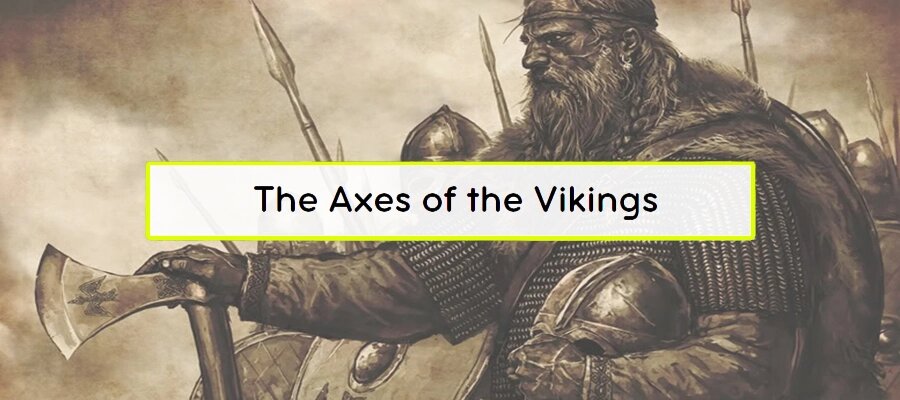When picturing the fierce warriors of the Viking Age, one cannot overlook their iconic weapon of choice: the mighty axe. In this blog post, we embark on a journey into the fascinating world of Viking axes, exploring their significance, types, craftsmanship, and the role they played in Viking society. Join us as we delve into the realm of the Vikings and uncover the power and prowess of their favored weapon.

The Viking axe was more than just a tool for cutting wood or clearing land. It was a symbol of status, skill, and bravery. Vikings believed that their axes possessed supernatural powers and served as conduits between the physical and spiritual realms. These fearsome warriors wielded their axes with precision and ferocity, striking fear into the hearts of their foes.
Viking axes came in various shapes and sizes, each tailored to a specific purpose on the battlefield. The most well-known was the “bearded axe,” named for its distinctive, elongated lower blade resembling a beard. This design provided a larger cutting surface and enhanced the effectiveness of both hacking and hooking maneuvers. Other types of Viking axes included the smaller “hand axe” used for close combat and the “broad axe” with a wide, straight cutting edge.
Viking axes were masterfully crafted with meticulous attention to detail. The blades were forged from high-quality iron or steel and often adorned with intricate engravings, runes, or symbolic motifs. The hafts, made from sturdy wood, were typically around 80 to 90 centimeters long, allowing for effective two-handed use. The combination of superior craftsmanship and robust materials resulted in axes that were not only deadly but also durable.
In battle, Vikings skillfully wielded their axes, utilizing a combination of slashing, chopping, and hooking techniques. The bearded axe’s lower blade allowed warriors to hook their opponents’ shields or weapons, creating openings for devastating strikes. Vikings were also adept at throwing their axes with accuracy, giving them a deadly advantage at a distance. The versatility of the Viking axe made it a formidable weapon in both open-field combat and close-quarters engagements.
Beyond its practical use in battle, the Viking axe held deep cultural and symbolic meaning for the Norse people. It represented power, honor, and strength. Axes were often passed down through generations and had ancestral connections. They were also a prominent symbol of Viking society and appeared in Viking mythology, where gods and heroes wielded legendary axes with extraordinary powers.
The Viking axe was an embodiment of the Viking warrior spirit, capturing the essence of their ferocity, skill, and indomitable spirit. From the intricately crafted bearded axes to the strategic battle tactics employed by the Norse warriors, the axe played a central role in Viking warfare and culture. Today, the legacy of the Viking axe lives on, captivating our imagination and reminding us of the awe-inspiring prowess of these ancient warriors.